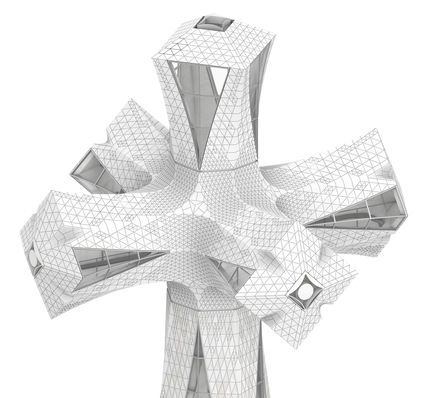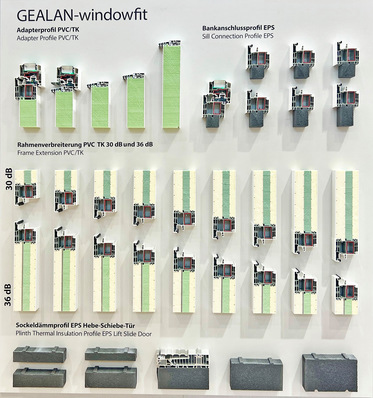The vision of the architects from Grotte Art and the firm of consulting engineers Transprojekt-Warszawa Sp. z o.o., Warsaw that was commissioned to design the noise protection measures was to create a light and transparent structure that avoids the heavy and massive impression usually associated with structures of this type.
The Light Roof developed under this premise, a visually appropriate lightweight structure fabricated from the Jansen VISS Basic steel profile system and Pilkington special glazing, is 1200 metres long, with an emergency exit every 200 metres. In order to ensure air circulation without a mechanical ventilation system, the Light Roof is open at the top in places: approximately 15% of the surface area is not glazed. The glazed enclosure complies with the approval documentation and fulfils the sound insulation requirements of Rw = 39 dB.

Jansen AG
The substructure, a factory-prefabricated semicircular open frame of curved steel beams, is installed at regular intervals of six metres; the diameter of the support structure varies between 32 metres at the narrowest and 64 metres at the widest section. The steel/glass superstructure is supported on these curved beams.
The extensive overhead glazed roof is a Jansen VISS Basic solution customised specifically for this project. This steel profile system, which was designed to allow a wide choice of supports, can provide the tested characteristics of the proven facade system on any supports, because Jansen VISS Basic can be attached to any steel substructure.
This means greater freedom for the designers with the assurance that the system advantages are always available, especially the acknowledged simple and effective glass rebate drainage and ventilation solution.
Composite glass panels reduce noise
Jansen VISS Basic is a mullion-transom construction based on a system of dry/pressure glazing, which is just as suitable for large vertical facades as it is for inclined and roof glazing. Different lengths of bolts allow the installation of filler panels 6 to 55 millimetres thick.

Jansen AG
The composite glass panels used for this project combine the noise protection requirements with those of composite laminated glass: The inner pane of laminated glass, which itself consists of two layers of glass and a flexible PVB film interlayer, offers sound insulation and safety at the specified class P2A level. In case of fracture, the film layers keep the pieces of glass in place.
The outer pane was made out of tempered glass with increased impact resistance and capable of bearing rain and snow loads. At the same time as tempering, the glass is screenprinted with the necessary warning markings to prevent bird strikes. Cover profiles are bonded in place in the transom area of the overhead glazing and small stainless steel plates specifically manufactured for this project are bolted on for safety.

Jansen AG
The lightweight steel construction makes the enclosure as transparent as possible. The steel/glass structure not only contains the noise and emissions of the vehicles, it also serves as an orientation point for drivers. Last but not least, the Light Roof adds an attractive urban design component to the richness of the Warsaw cityscape.













